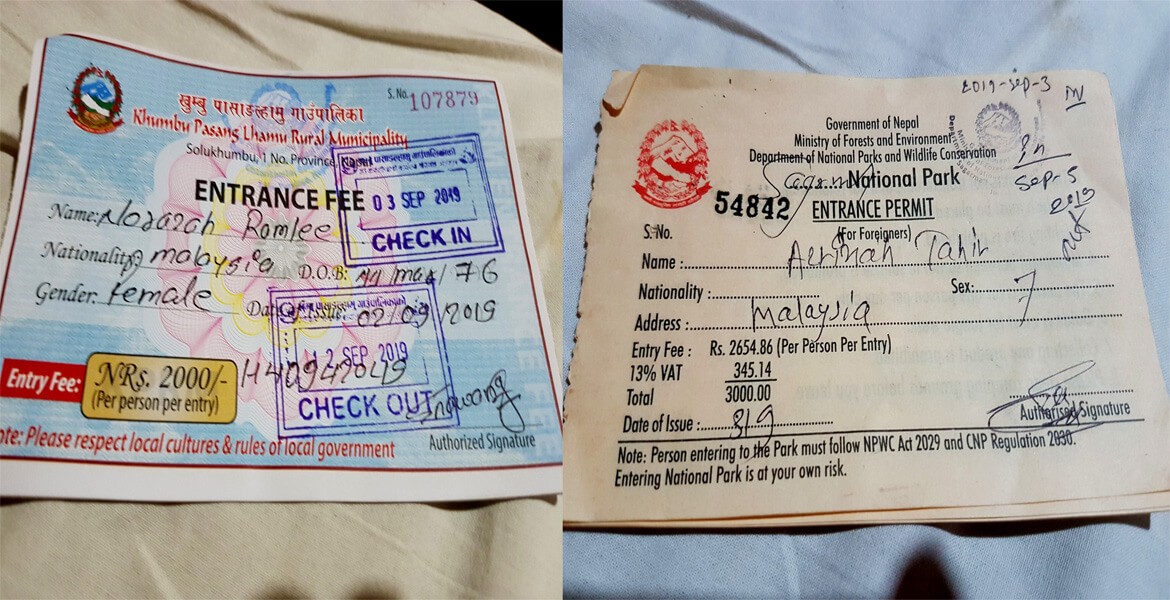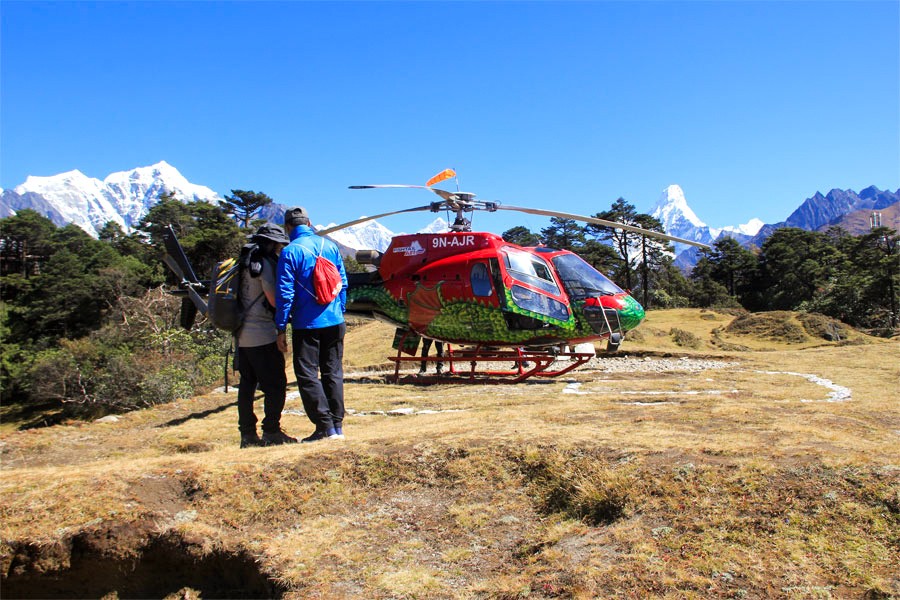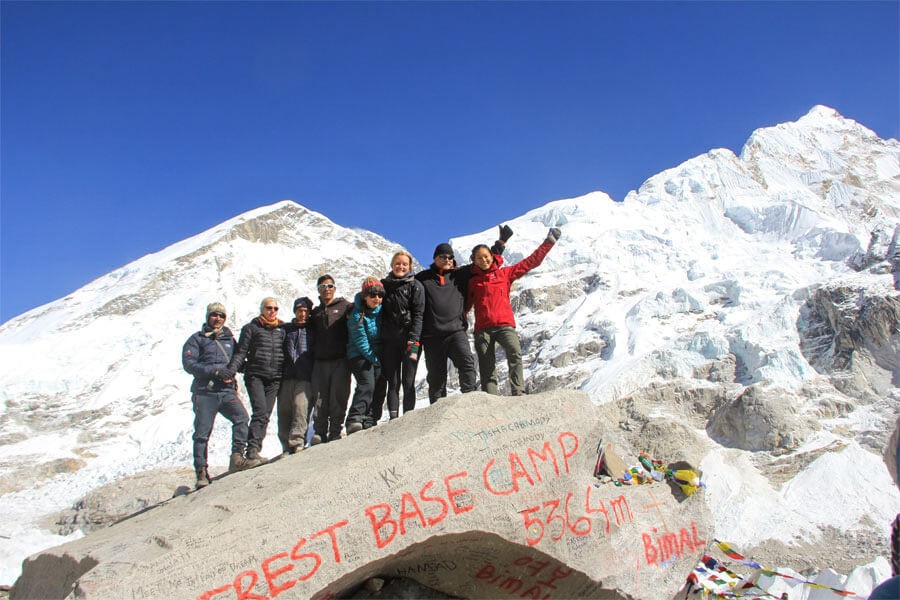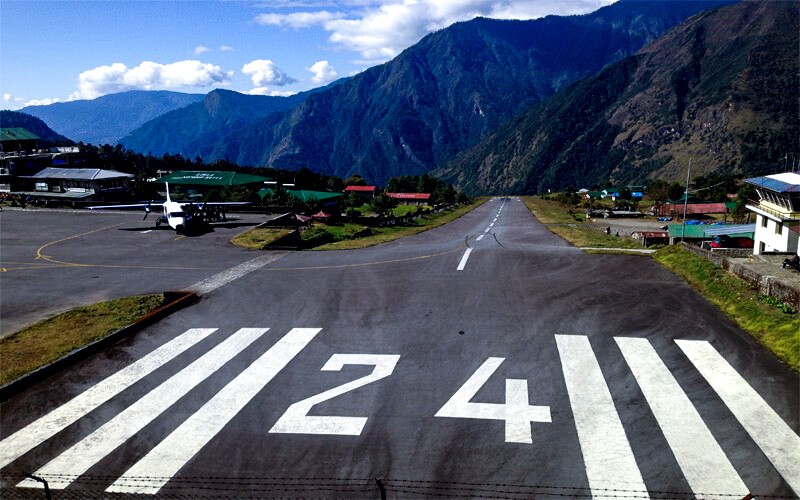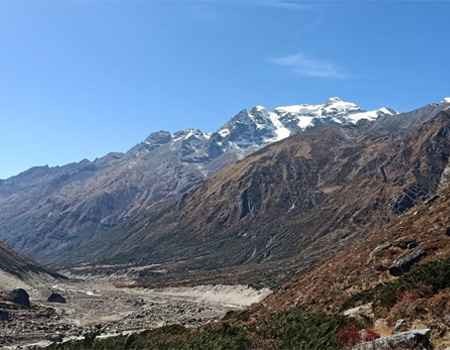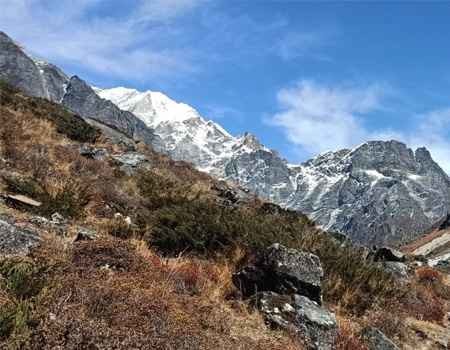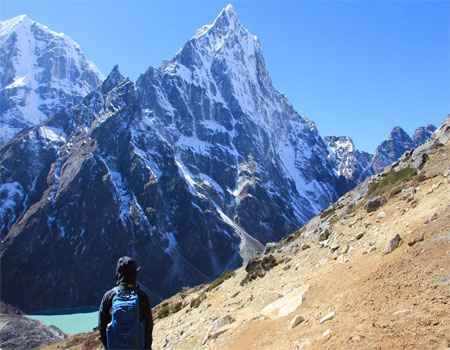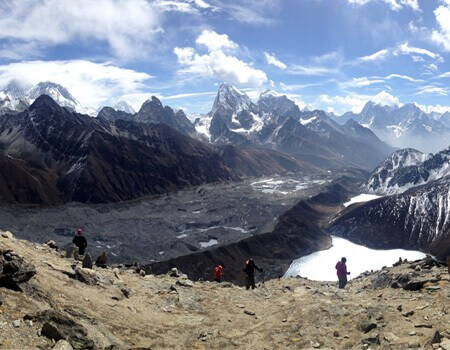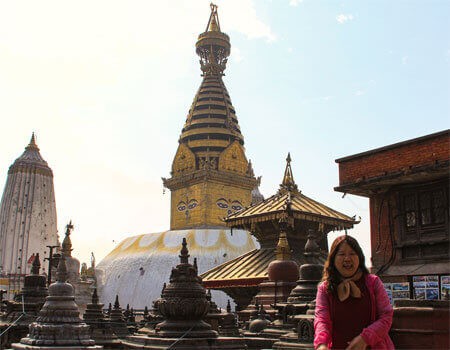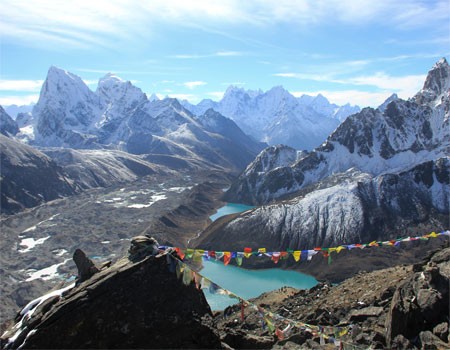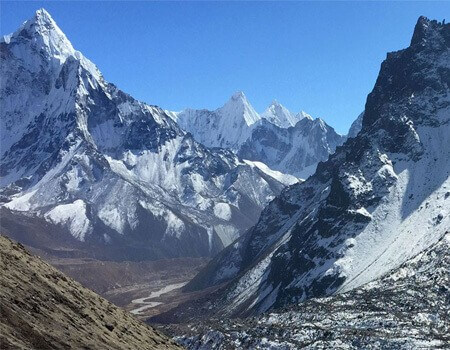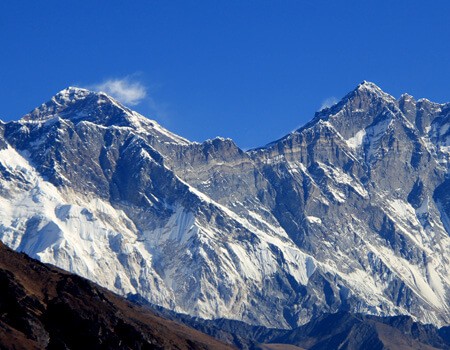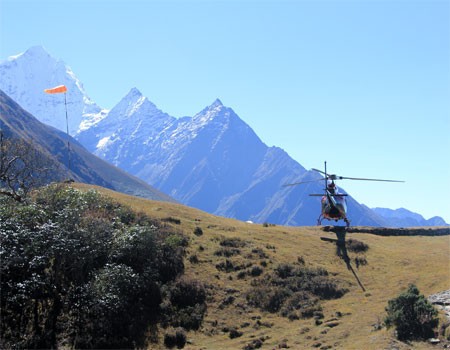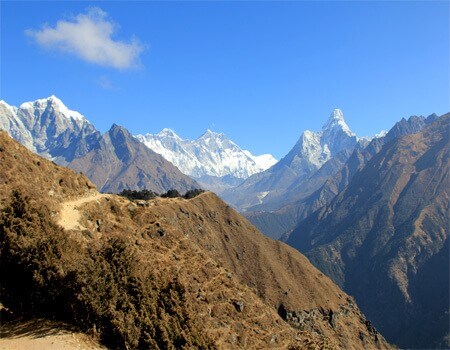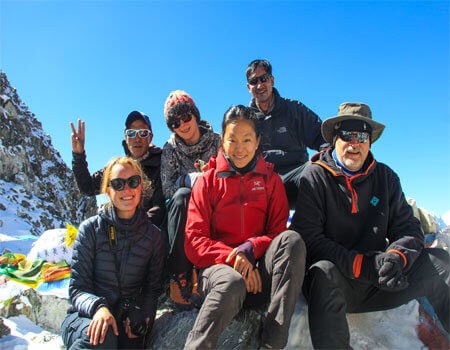Before planning a Trek to Everest Base Camp, one might ask, 'Do I need a Trekking Permit?' The answer is yes! You need a permission ticket to visit the EBC in Nepal. Nestled in the northeastern part of the country in the Himalayan region, the Everest Base Camp Trek is a Trekking program that leads to the lap of the tallest peak in the world. It has been growing in popularity among trekkers and travelers all around the globe.
Trekking Permit Cost For Everest Base Camp
Table of Contents
Everest Base Camp is the most popular Trekking destination in the world. It is an adventure of a lifetime, a journey to the world's tallest peak, Mt. Everest. This trek is one of the most sought-after programs, and thousands of trekkers worldwide come to accomplish it every year. To explore the region for a few days, you must have a trekking permit for Everest. Filled with mesmerizing features of the soaring peaks, Everest Base Camp is an unforgettable trip loaded with breathtaking views.
It is an adventurous Trekking course that takes you to an elevation of 5,545m, where you can see the majestic Everest right before you. This trek also allows you to traverse the lush valleys of the Khumbu Region, also known as the Everest Region. With every step in the area, you can witness some of the tallest peaks, such as Lhotse, Nuptse, Cho-Oyu, Ama Dablam, Changtse, Pumori, Lobuche, etc.
The major attractions of this trek are the stunning mountain views, lush valleys, rare flora, fauna, and the unique Sherpa culture. The trails take you through the famous Namche Bazaar, the gateway to the Himalayas. You will also pass through the green Sagarmatha National Park, adorned with vibrant rhododendron flowers and a dense subtropical forest. Rich in biodiversity, rare and endangered animals like red panda, snow leopard, musk deer, etc., can be found in this region.
As you ascend higher, the greenery decreases, and pristine glacial lakes and alluring mountain views surround you. From the rewards provided by the Everest Base Camp Trek, this may sound hard for beginners. However, it isn't easy, and anyone can do this trek. Because it primarily involves uphill and downhill walks with plenty of acclimatization, you will not require much experience or physical fitness. But, you are advised to prepare for cardiovascular activities and flexibility training. With many more attractions and features, Everest Base Camp Trek is worth a shot.
Permit to See These Attractions
- The world's smallest airport is known as Tenzing Hillary Airport in Lukla.
- Exploring the unique culture and lifestyle of the Sherpa people in the Everest region.
- Visiting some of the oldest monasteries in Tengboche and Dingboche
- Rare and endangered animals include Himalayan Thar, red panda, and snow leopard.
- Highest Glacial Lake in Gokyo.
Trek Permit For Everest Base Camp Itinerary
- Day 01: Fly to Lukla (2840m.) and trek to Phakding (2610m.) for 3 hours.
- Day 02: Trek from Phakding to Namche Bazaar (3440m.) 6 hours.
- Day 03: Rest and acclimatization day at Namche Bazaar (3440m.)
- Day 04: Trek from Namche Bazaar to Tengboche (3860m.) for 5 hours.
- Day 05: Trek from Tengboche to Dingboche (4410m.) 5 hours.
- Day 06: Acclimatization day at Dingboche (4410m.)
- Day 07: Trek from Dingboche to Lobuche (4910m.) 4- 5 hours
- Day 08: Trek from Lobuche to Everest Base Camp (5364m.) via Gorekshep (5140m.) 7-8 hours.
- Day 09: To Kalapatthar (5545m.), descend to Gorekshep, and trek to Pheriche (4210m.) for 5 hours.
- Day 10: Trek from Pheriche to Namche Bazaar for 6-7 hours.
- Day 11: Trek from Namche Bazaar to Lukla. For 6 hours.
- Day 12: Fly back to Kathmandu.
Check the Detailed Itinerary and package here
Journey with Trek Permit to Everest Base Camp
The grand journey to the lap of the world's highest peaks starts with a thrilling flight to Lukla Airport. As your flight nears the small airport surrounded by green hills, the terrain gradually changes beneath you. Soon after the exciting landing, you will trek to Phakding for approximately three hours.
After resting the night at Phakding on day one, you head towards Namche Bazaar. It can take up to six hours or more, depending on your speed, to reach Namche Bazaar. Here, you are highly recommended to spend an additional day for acclimatization. In Namche Bazaar, you can spend the day exploring the lush valley or do some last-minute shopping.
The next day, you will head to Tengboche. This part is where the difficulty in trekking rises. As you ascend to Tengboche, the greenery decreases, and the clear panoramic views come into sight. It takes almost five hours of walking to reach Tengboche.
From Tengboche, you will now head to Dingboche at an elevation of 4,410m. Again, you are recommended to spend another day at Dingboche to acclimate. You can visit the monasteries or hike to the Chhukung Valley for the day.
The next destination is Lobuche, and now that you are traveling at 5,000m, the trek gets harder and harder. After spending the night at Lobuche, you will now head to Gorekshep. You must make it to Everest Base Camp and return to Gorekshep on the same day. The whole trip for the day will take almost seven to eight hours of walking. Upon arriving at the base camp, you feel victorious as the mighty massifs surround you.
After spending the night at Gorekshep, you will now return via Kalapatthar. Here, you can see the picturesque view of Everest, Ama Dablam, Cho-Oyu, etc. You can also view the sun rising behind the Himalayas, leaving you in awe and amazement. After spending some time at Kalapatthar, from Gorekshep, the destination for the day is Pheriche. You will spend the night at Pheriche and head to Namche Bazaar and Lukla Airport.
Finally, as your trek ends, you return from Lukla airport to Kathmandu.
Everest Trek Permit and Cost
If you plan to trek to Everest Base Camp, different costs and permits are involved. The majority of the Cost involved will be for personal Trekking equipment. Also, one kind of Cost will be charged for the Trekking Permits. You will need three Permits for the Everest Base Camp Trek. They are described below-
Khumbu Pasang Lhamu Rural Municipality Entrance Permit
This new Permit cannot be received in Kathmandu; the local government in Khumbu directly collects NPR 3,000 per person from foreigners. This Permit can be obtained at the end of Lukla Town.
Jiri Everest Base Camp Trek Permit and Cost
If you follow the classic Jiri Everest Base Camp Trail, you will obtain a permit in Shivalaya. You must also get an additional Permit for Gaurishankar Conservation Area if you come through Jiri, which can cost you NPR 3,000.
Sagarmatha National Park
The last Permit you will have to obtain is for Sagarmatha National Park. The entry fee per person is NPR 3,000. You can get this Permit in Kathmandu from the Nepal Tourism Board office or Monjo at the entrance gate. It is more convenient to obtain this Permit at Monjo.
Trekkers Information Management System (TIMS) Card
Nepal Tourism Board issues Trekkers Information Management System Card. No individual trekker can issue this without help from the Trekking company. You must join the Trekking Agency to buy this Permit, which Costs 2000 NPR for all trekkers except those from South Asian Countries, and the people from SAARC countries cost 1000 NPR.
Note: If you plan a helicopter tour to Everest Base Camp because you do not have time for a long trek or can not walk at high altitudes and cold temperatures, the same permits will be required.
Key Information EBC Trek Entering with Permit
Food
Everest Region is known for its finest tea houses and guesthouses along the trekking trails. There are abundant teahouses aligned beside the smooth paths. You will not have to worry about food while Trekking in the Everest Region. The teahouses here serve local Sherpa cuisines and Nepali cuisines as well. However, if you do not prefer local delicacies, they also provide Western cuisine. Though the food may not be perfect, it won't disappoint you.
It will be harder to find a variety of cuisines when you trek higher and higher. Some of the most loved Sherpa dishes by the trekkers are Rildo, momos, rice, curry, and butter tea. You can eat and catch up with other travelers just like you, which can also be an opportunity to learn about the Sherpa culture and way of life.
Accommodation
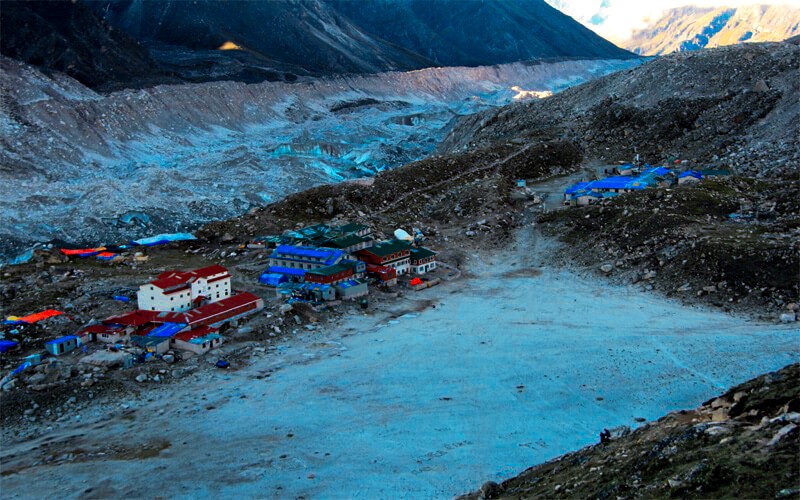
Last shelter on the Everest base camp trek
Accommodation is the most important thing you have to consider while traveling. However, the Everest Region offers many tourist-friendly Accommodations throughout the trail. Compared to other trekking destinations with tea house treks, the Everest Region is considered to have the best tea houses and guest houses. Here, you will be able to find luxurious Accommodations for cheaper ones. You can get hotels and tea houses with basic facilities for a bed and food according to your budget. Almost every teahouse and guest house provides free Wi-Fi service to travelers. The accommodation in the Everest Region is reasonably affordable. Detailed information about accommodation is here.
You should bring your sleeping bag as an extra blanket, which might cost you additional money.
Altitude Sickness
Everest Base Camp Trek is a very challenging and demanding trek. Altitude Sickness is a primary reason for making this trek more difficult and unpredictable. Since Everest Base Camp is located at a high elevation and the tour is above 5,000m, high-altitude sickness can happen to anyone. High altitude or acute mountain sickness can occur to anyone at 3,000m. This sickness occurs when your body receives a lower amount of oxygen. As you ascend higher, the oxygen gets thinner and thinner. Drinking water and always keeping a Diamox tablet beside you would be best. The common symptoms of high altitude sickness are headache, lightheadedness, nausea, and dizziness.
Weather
Thousands of travelers visit Nepal to reach Everest Base Camp, and the weather plays a vital role in the success of this trek.
The weather and temperature in the Everest Region are always unpredictable. From December to January, a season known as the 'off-season,' the Everest Base Camp freezes, with temperatures constantly dropping to -18 degrees Celsius. So, only a few people dare to trek in this region during the winter season.
The best weather and temperature in the Everest Region is during the spring and autumn seasons. These seasons are also the best to explore the Treks of the Everest Region. During the spring and autumn, the weather is delightful and remarkable. The spring season, from February to May, is neither too hot nor too cold. You can enjoy the panoramic view of the massifs without any unpredictable weather changes. Similarly, autumn gives off the same energy and weather as spring. Autumn provides clear, warm weather without sudden rain, blizzards, and storms.
Lukla Flight
Lukla Airport, the Tenzing Hillary Airport, is the only airport in the Everest Region. It is considered one of the minor airports in the world. It is also surrounded by high peaks, making it challenging for the aircraft to land quickly. Due to its demanding geographic structure and variable weather conditions, flight delays or cancellations are expected in Lukla. Adding to the challenging topography, adverse weather conditions like rainfall, storms, and blizzards in the Everest Region may lead to flight cancellations or delays. The weather is dry and stable if you trek in spring and autumn. So, your Lukla flight is less likely to get canceled or delayed.
Insurance
Trekking in the Everest Region means spending time in one of the most remote regions in the world. While traveling in this region is not risky, you should still be prepared to face unpredicted risks and challenges. Trekking is a physically demanding activity and poses some risk factors. So it would be better to be insured before venturing into the Everest Base Camp trek. Insurance is necessary for trekkers traveling to the Everest Base Camp as even minor injuries like sprained ankles can result in a loss. Since this trek takes place in a rural region, hospitals are unavailable. You might need helicopter evacuation, which will cost a lot if uninsured. Insured, you will not face any problems, even if the helicopter evacuation is costly.
In Conclusion
Everest Base Camp Trek is an adventurous and marvelous Trek offering Nepal's best, but you must have three different Trekking Permits. Of its distance and high altitude, many people may find it challenging and complex. But there are various ways to do this trek, depending on how much time you can spare for this trip. The high elevation can be a problem and a significant variable while trekking. So, you should research and come prepared before starting this journey. Following the proper guidelines for this trek will reward you with the best Trekking Experience in the Everest Region. If you are indeed a nature lover and trekking enthusiast, Everest Base Camp should be on your list to visit.
